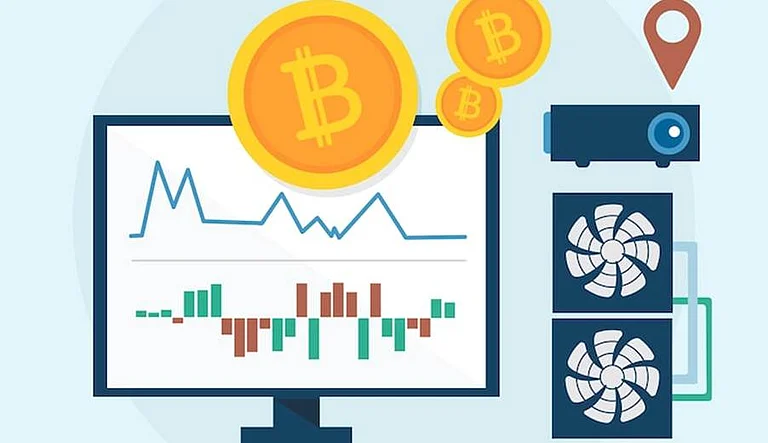In the fast-changing DeFi ecosystem, crypto flash loans, multi-step transaction pipelines, and cross-chain automation are fast converging into a new class of financial tooling. Flash loans, once seen primarily as either vehicles for arbitrage or quick rotations of liquidity, are now being reconsidered through intricate, automatable workflows that can interact with multiple chains, protocols, and smart contracts at the same time. The degree to which blockchain interoperability is improving and on-chain execution is becoming more modular raises an important question: Can multi-step pipelines turn flash loans into powerful, cross-chain financial automation engines?
This article explains how multi-step DeFi pipelines work, the prospects of atomic cross-chain actions, the infrastructure underlying this evolution, and future opportunities and constraints.
Understanding Flash Loans & Multi-Step Pipelines
Flash loans enable users to access large portions of capital without the need for collateral—provided the amount borrowed is returned within the same blockchain transaction. These loans, when first conceptualized, were intended for:
Arbitrage
Collateral Swapping
Debt refinancing
Liquidation strategies
But the model is expanding: as DeFi becomes increasingly modular, developers can chain multiple operations into a single atomic execution. This is where multi-step pipelines enter the picture.
What are Multi-Step DeFi Pipelines?
A multi-step pipeline involves a sequence of smart-contract-controlled actions executed in a single or orchestrated set of transactions. Think of them as programmable workflows that string together:
Borrow liquidity
Asset swapping
Bridge tokens
Deploy collateral
Repay flash loan
These pipelines execute with near-zero manual intervention and aim to eliminate the risk of operation through deterministic automation.
Why Multi-Step Pipelines Matter for Cross-Chain Automation
Traditionally, DeFi actions have been confined to one chain, but with the growth of:
Cross-chain bridges
Interoperability layers, including messaging layers
Modular blockchains
Restaking-verified cross-chain security
Besides, developers can now coordinate financial operations across distinct ecosystems.
Multistep pipelines allow flash loans to extend beyond single chains by:
Orchestrating Atomic-Like Sequences over Multiple Networks
Managing liquidity across ecosystems
Reducing fragmentation in DeFi liquidity pools
Enabling automated arbitrage across chains
This shifts flash loans from isolated events to components of larger automation engines.
How Flash Loans Fit Into Cross-Chain Automation
Now, flash loans have to combine multiple technical layers to become automation engines that allow multi-step pipelines.
1. Smart Contract Orchestration Layer
This layer defines the workflow logic for crypto flash loans:
Borrow
Replace
Bridge
Deploy
Repay
Each step must be verifiable, deterministic, and revertible in case something fails.
2. Messaging or Interoperability Layer
The capability to send verified messages across chains is at the very core of cross-chain financial automation. Modern interoperability solutions provide:
State proofs
Secure message relay
Event-driven execution
This allows a flash loan originated on Chain A to trigger actions on Chain B and synchronize results.
3. Liquidity Routing Layer
For cross-chain execution, liquidity needs to be available and routeable. Advanced DeFi routing systems handle:
Path optimization
Price discovery
Liquidity splitting
Stablecoin conversion
Execution fallback mechanisms
4. Settlement & Reversion Layer
Settlement rules have to ensure that for cross-chain flash loan automation to function safely:
Execution on all chains succeeds
Any failed step reverts consistently
Capital is never stranded mid-bridge
This is the biggest engineering challenge.
Are Multi-Step Pipelines Actually Turning Flash Loans Into Financial Automation Engines?
Yes-partially
A number of emerging trends show that flash loans are turning into automated engines.
The rise of cross-chain arbitrage bots
Modular DeFi execution layers with Composable Actions
Automated approaches to yield optimization and liquidity balancing
Integration with smart contract automation frameworks, for example, keepers, schedulers
Cross-chain lending/borrowing optimization systems
This is still early-stage infrastructure, but the direction is clear: multi-step pipelines are making flash loans a foundational component of automated, cross-chain finance.
Benefits and Challenges: A Comparison Table
Aspect | Benefits of Multi-Step Flash Loan Pipelines | Challenges / Cons |
Scale | Execute large value operations instantly | Liquidity limits on certain chains |
Execution | Automated deterministic programmable | Higher execution complexity |
Cross-chain | Arbitrage refinancing liquidity balancing | Bridge/security risk |
Cost-efficiency | Avoid locking long-term capital | Gas costs may spike |
Risk | Fully reversible if atomic | Multi-chain atomicity is still evolving |
Applications of Cross-Chain Flash Loan Automation
1. Multi-Chain Arbitrage and Price Equalization
Pipelines can scan prices across multiple chains, borrow via flash loan, execute swaps, bridge assets, capture spreads, and repay—all in minutes or seconds.
2. Liquidity Balancing Across Chains
Protocols can automatically move liquidity to chains where demand is higher.
3. Automated Debt Refinancing
Borrow from one chain, move capital cross-chain, refinance at lower APRs, return assets.
4. On-Chain Trading Bots Powered by Flash Loans
Multi-chain trading bots use flash liquidity to execute high-volume trades.
5. Automated Collateral Deployment in Multi-Chain Lending
Move collateral across ecosystems without holding idle liquidity.
Risks and Limitations
Despite innovation, technical and operational risks remain:
1. Smart Contract Risk
Multi-step pipelines rely heavily on complex smart contracts. Bugs or logic errors can compromise an entire workflow.
2. Cross-Chain Bridge Vulnerabilities
Bridges have historically been high-risk vectors for hacks.
3. Downtime or Congestion
Network delays can break the atomic nature of cross-chain operations.
4. Dependency on External Automation Infrastructure
Schedulers, oracles, off-chain workers—each adds additional attack surface.
Step-by-Step: How a Multi-Step Flash Loan Pipeline Might Work
Step 1: Borrow flash loan on Chain A
Step 2: Convert assets via DEX aggregator
Step 3: Bridge tokens to Chain B
Step 4: Deploy them for arbitrage, collateral, or refinancing
Step 5: Bridge some returns back
Step 6: Repay flash loan with fee
Step 7: Retain profit across target chains
These sequences will eventually operate like automated workflows within cross-chain DeFi infrastructures.
Future Outlook: The Road to Cross-Chain Automation Engines
The future may include:
1. Fully Composable Cross-Chain Execution
With unified messaging standards, multi-step pipelines could execute almost seamlessly.
2. Higher-Level Automation DSLs
Users may write strategies in high-level languages rather than coding raw smart contracts.
3. Automated Liquidity DAOs
Flash loan pipelines could autonomously manage liquidity across ecosystems.
4. AI-Driven DeFi Bots
AI agents optimizing cross-chain risk, yield, and liquidity in real-time.
5. Multi-Chain Atomic Transactions
Emerging cryptographic solutions (e.g., zero-knowledge proofs) may enable atomicity across chains.
Conclusion
Multi-step pipelines are rapidly transforming flash loans from simple liquidity tools into sophisticated, cross-chain financial automation engines. While full atomic cross-chain execution remains technically challenging, the foundational layers are emerging: interoperable messaging, modular workflows, programmable orchestrators, execution bridges, and multi-chain liquidity routing systems. As these technologies mature, flash loans could become a backbone of automated, interoperable finance—balancing liquidity, executing arbitrage, managing collateral, and powering next-generation DeFi strategies with unprecedented efficiency.
The intersection of flash loans, interoperability, and automation represents the next major leap for decentralized finance. And although risks and limitations remain, the direction is clear: multi-step pipelines are pushing flash loans into a new era of cross-chain programmable finance.
FAQs
1. Are flash loans legal and safe to use?
Flash loans themselves are legal; they are simply a smart-contract feature. Safety depends on the security of the protocol, contract audits, and the user’s understanding of execution risks.
2. Can flash loans work across multiple blockchains?
Not yet in fully atomic form. But through interoperability layers, multi-step cross-chain pipelines are becoming increasingly feasible.
3. Do you need coding skills to use flash loan automation?
Advanced strategies require coding knowledge today, but future platforms may offer user-friendly interfaces with no-code automation.
4. Why are cross-chain pipelines important in DeFi?
They reduce liquidity fragmentation, enable multi-chain strategies, and increase capital efficiency across ecosystems.
5. What is the main limitation of cross-chain flash loans?
The biggest limitation is achieving true atomicity across chains due to differing consensus times, bridge risks, and asynchronous messaging.

























